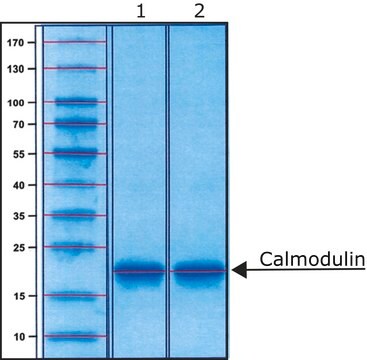ABE1865
Anti-UTX (KDM6A)
from rabbit, purified by affinity chromatography
Sinónimos:
Lysine-specific demethylase 6A, Histone demethylase UTX, Ubiquitously-transcribed TPR protein on the X chromosome, Ubiquitously-transcribed X chromosome tetratricopeptide repeat protein
About This Item
Productos recomendados
origen biológico
rabbit
Nivel de calidad
forma del anticuerpo
affinity isolated antibody
tipo de anticuerpo
primary antibodies
clon
polyclonal
purificado por
affinity chromatography
reactividad de especies
human, mouse
técnicas
ChIP: suitable
immunocytochemistry: suitable
immunofluorescence: suitable
immunoprecipitation (IP): suitable
western blot: suitable
Nº de acceso NCBI
Nº de acceso UniProt
Condiciones de envío
ambient
modificación del objetivo postraduccional
unmodified
Información sobre el gen
human ... KDM6A(7403)
Descripción general
Ref.:
Lederer, D et al. (2012). Am. J. Hum. Genet. 90, 119-124.
Zha, L et al. (2015). J. Biol. Chem. 290, 25151-25163.
Especificidad
Inmunógeno
Aplicación
Chromatin Immunoprecipitation (ChIP) Analysis: A representative lot detected a time-dependent UTX (KDM6A) enrichement at the Myogenin and CKm regulatory regions following myogenic differentiation of murine C2C12 myoblasts. shRNA-mediated Six4 knockdown, but not p38 MAPK inhibition, downregulated UTX (KDM6A) recruitment to the Myogenin and CKm loci (Seenundun, S., et al. (2010). EMBO J. 29(8):1401-1411).
Immunocytochemistry Analysis: A representative lot detected UTX (KDM6A) immunoreactivity by indirect immunofluorescence staining of 1% paraformaldehyde-fixed, 0.5% Triton X-100-permeabilized myofibers isolated from mouse extensor digitorum longus (EDL) muscles (Faralli, H., et al. (2016). J. Clin. Invest. 126(4):1555-1565).
Immunofluorescence Analysis: A representative lot detected UTX (KDM6A) immunoreactivity by indirect immunofluorescence staining of 4% paraformaldehyde-fixed, 1% Triton X-100-permeabilized, transverse OCT cryosections sections of mouse tibialis anterior skeletal muscle (Faralli, H., et al. (2016). J. Clin. Invest. 126(4):1555-1565).
Immunoprecipitation Analysis: A representative lot co-immunoprecipitated PTIP and RbBP5 with UTX using embryonic stem cell (ESC) nuclear extracts from wild-type or Utx(KI/KI) mice harboring homozygous demethylase dead Utx mutant gene knock-in. No UTX/PTIP/RbBP5 complex was precipitated from Utx-knockout ESCs (Faralli, H., et al. (2016). J. Clin. Invest. 126(4):1555-1565).
Immunoprecipitation Analysis: A representative lot co-immunoprecipitated Six4 with UTX (KDM6A) using nuclear extract from murine C2C12 myoblasts 24 hrs post myogenic differentiation (Seenundun, S., et al. (2010). EMBO J. 29(8):1401-1411).
Western Blotting Analysis: A representative lot detected UTX4 in myoblast whole cell lysates and embryonic stem cell (ESC) nuclear extracts from wild-type or Utx(KI/KI) mice harboring homozygous demethylase dead Utx mutant gene knock-in, as well as in UTX and MLL4 immunoprecipitates. No UTX target band was detected in Utx-knockout ESCs (Faralli, H., et al. (2016). J. Clin. Invest. 126(4):1555-1565).
Western Blotting Analysis: A representative lot detected UTX (KDM6A) in nuclear extracts from human K562 and murine C2C12 myoblasts (24 hrs post myogenic differentiation), as well as in Six4 immunoprecipitates. shRNA treatment prior to nuclear extract preparation diminished target band detection (Seenundun, S., et al. (2010). EMBO J. 29(8):1401-1411).
Epigenetics & Nuclear Function
Calidad
Western Blotting Analysis: 0.2 µg/mL of this antibody detected UTX (KDM6A) in 10 µg of HeLa nuclear extract.
Descripción de destino
Forma física
Almacenamiento y estabilidad
Otras notas
Cláusula de descargo de responsabilidad
¿No encuentra el producto adecuado?
Pruebe nuestro Herramienta de selección de productos.
Código de clase de almacenamiento
12 - Non Combustible Liquids
Clase de riesgo para el agua (WGK)
WGK 1
Certificados de análisis (COA)
Busque Certificados de análisis (COA) introduciendo el número de lote del producto. Los números de lote se encuentran en la etiqueta del producto después de las palabras «Lot» o «Batch»
¿Ya tiene este producto?
Encuentre la documentación para los productos que ha comprado recientemente en la Biblioteca de documentos.
Nuestro equipo de científicos tiene experiencia en todas las áreas de investigación: Ciencias de la vida, Ciencia de los materiales, Síntesis química, Cromatografía, Analítica y muchas otras.
Póngase en contacto con el Servicio técnico